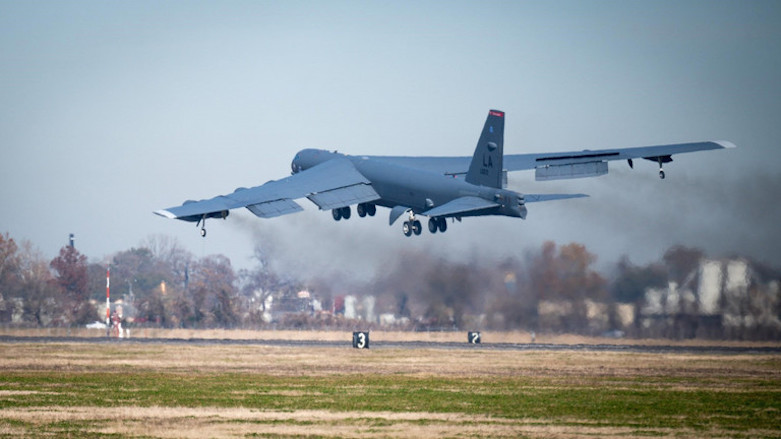US show of force against Iran; second in three weeks

WASHINGTON DC (Kurdistan 24) - On Wednesday, two American B-52 Stratofortress strategic bombers left their base in Louisiana and flew to the Persian Gulf. They remained there for two hours and returned to Louisiana on Thursday.
The 36-hour flight—in which the B-52s were repeatedly refueled in mid-air—was a show-of-force, US officials explained, intended to send a message of deterrence to Iran and one that underscored “the US military’s ability to defend itself and its allies in the region,” The Washington Post explained.
A nearly identical B-52 mission took place on Nov. 21, shortly after the Pentagon announced that it would reduce US forces in Iraq from 3,000 to 2,500 troops and in Afghanistan from 4,500 to 2,500, with both drawdowns to be completed by Jan. 15, shortly before President Donald Trump leaves office.
Read More: US announces troops cuts in Afghanistan, Iraq, but not in Syria
It is somewhat unusual for the US Air Force to conduct two such show of force missions in such quick succession.
The latest dispatch of the B-52s came amid increased tensions in the region following the assassination of a leading Iranian nuclear scientist, Mohsen Fakhrizadeh, late last month.
Read More: Top Iranian nuclear scientist assassinated outside Tehran, apparently by Israel
In addition, the first anniversary of the assassination of Qassim Soleimani, head of the Qods Force of Iran’s Islamic Revolutionary Guard Corps, will occur on Jan. 3. Iran has vowed to avenge his death, as well as Fakhrizadeh’s.
“We have seen some indications of increased attack planning by Iranian-linked forces inside Iraq,” a US military official said, and “presidential transitions”—which will occur on Jan. 20, as Joe Biden assumes office—“are normally a time a time when our adversaries try to test us.”
Indeed, on Jan. 25, 1993, five days after Bill Clinton took office from George H. W. Bush, a Pakistani gunman, Mir Aimal Kansi, killed two people and wounded three others outside the CIA. A month later, on Feb. 26, New York’s World Trade Center was bombed, with the intent of toppling one tower onto the other.
Read More: Revisiting Ramzi Yousef’s terrorism: World Trade Center bombing and Philippines plane bombing plot
Both the mastermind of that bombing, Ramzi Yousef, and Kansi fled the US to the same destination: Quetta, Pakistan, suggesting the two attacks may have been linked and, in fact, may have been an attempt to exploit the 1993 presidential transition.
On Wednesday, the B-52s flew across the Atlantic Ocean and Europe, then over the Arabian Peninsula and down along the Arab side of the Persian Gulf, the Associated Press reported. Planes from Saudi Arabia, Bahrain, and Qatar accompanied the bombers, as they flew through the airspace of those countries.
"The ability to fly strategic bombers halfway across the world in a non-stop mission, and to rapidly integrate them with multiple regional partners demonstrates our close working relationships and our shared commitment to regional security and stability," the head of CENTCOM, Gen. Frank McKenzie, said in a written statement.
"Potential adversaries should understand that no nation on earth is more ready and capable of rapidly deploying additional combat power in the face of any aggression,” he emphasized.
Editing by John J. Catherine
